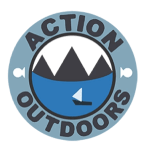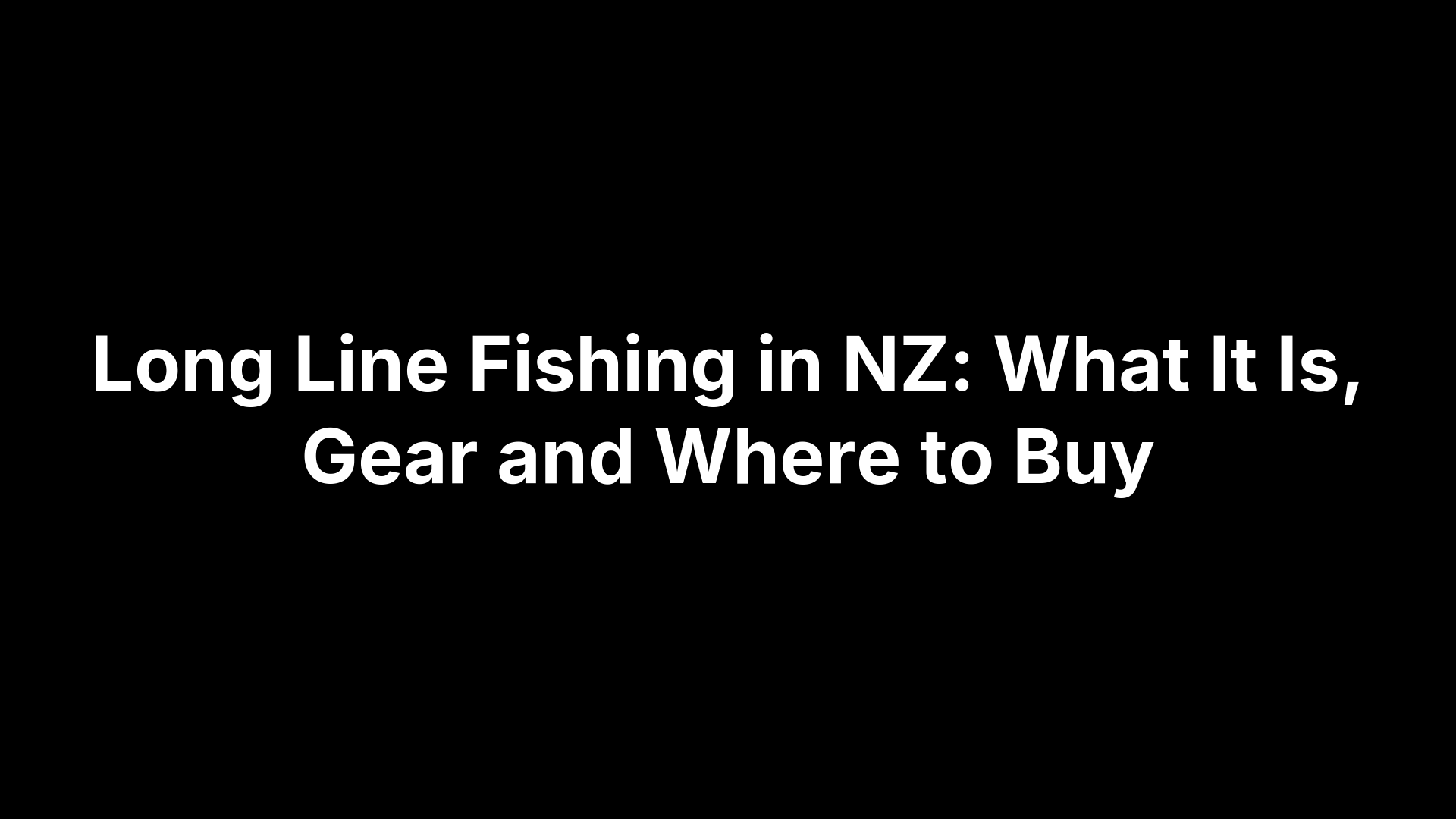Long Line Fishing in NZ: What It Is, Gear and Where to Buy
Long line fishing is a straightforward way to set many baits at once. Think a main line (the backbone) with short traces and baited hooks clipped along it, then set from the beach with a kontiki or drone, or deployed from a boat and left to soak. Used responsibly, it’s legal in NZ and highly effective for snapper, gurnard and kahawai.
In this guide you’ll learn how long lining works in local waters, the main setup styles (beach, boat and drone/kontiki), and the gear that makes it run. We’ll compare reels, explain what’s in a long line set, cover rigging, bait and trace choices, outline NZ rules and seabird‑safe practices, show where to buy trusted gear, and share care tips.
How long line fishing works in New Zealand waters
Long line fishing in New Zealand waters means deploying a mainline with spaced traces and baited hooks, either near the surface (pelagic) or on the bottom (demersal) depending on target fish. From beaches, kontikis or drones tow the long line offshore; from boats you set, weight and anchor it, with floats marking the ends. Let it soak, then haul on a long line reel. Use seabird‑safe methods and release non‑targets to minimise bycatch.
Types of long line setups: beach, boat and drone/kontiki
NZ long line setups fall into three practical styles: beach, boat, and drone/kontiki. All use the same backbone—a mainline with spaced traces—but differ in how you tow, anchor and haul. Pick based on access, surf, depth and how hands‑on you want to be.
- Beach: Shore‑based with a reel and stand; typically towed out by a kontiki or drone, then hand‑hauled.
- Boat: Demersal long line set and anchored from a tinny or launch; geared reel favoured.
- Drone/kontiki: Remote carrier takes the long line beyond the breakers for consistent distance drops.
Essential long line gear checklist
Getting your long line dialled starts with the right basics. Whether you’re beach‑setting with a kontiki/drone or dropping from a boat, a tidy system prevents tangles, speeds baiting, and keeps you safe when hauling under load. Run through this checklist before you hit the water.
- Mainline/backbone: durable mono or braid.
- Pre‑tied traces/snoods: with swivels/clips.
- Hooks: circle hooks matched to target species.
- Floats/buoys: end floats and a bright flag.
- Weights/anchors: to hold bottom and spacing.
- Long line reel: with a stable stand.
- Trace board/rack: for fast, tangle‑free baiting.
- Tools and spares: gloves, cutters, pliers, clips, leader.
- Carrier: kontiki/drone/kite or boat deployment gear.
Choosing a long line reel: manual vs geared vs electric
Your long line reel sets the pace for hauling and how tired you’ll feel at the end. Match it to where you fish and the length of your long line. Prioritise spool capacity, a stable stand or mount, corrosion‑resistant build, and a smooth, positive brake so you can control the line under load.
- Manual: Simple, affordable and low‑maintenance. Best for lighter beach long lines and shorter sets; slower on the retrieve.
- Geared: Added mechanical advantage for faster, easier hauling from beach or boat. Great with kontiki/drone distances.
- Electric: Powered retrieval for heavy boat long lines and frequent use. Requires onboard power and disciplined hands‑free safety.
Long line sets: what’s included and who they suit
Off‑the‑shelf long line sets bundle the backbone, traces and terminal gear so you can bait up fast and fish confidently. Many arrive pre‑rigged on a manual or geared long line reel and stand for beach work, or as compact kits for kayak/boat drops. They suit beginners, time‑poor anglers and anyone wanting a tidy, reliable setup.
- Mainline/backbone: with spaced clips/snoods.
- Pre‑tied traces: usually with circle hooks.
- Floats and weights: end buoys plus dropper sinkers.
- Reel/hauler: stand‑mounted reel or winder.
- Trace board: often included for tangle‑free baiting.
Rigging and deployment basics (beach and boat)
Whether you beach‑set or work from a boat, a tidy long line starts with preparation and steady tension. Pre‑bait traces on a board, stack the backbone neatly on the longline reel, choose weights that sink fast, and tag both end floats. For beach drops a kontiki or drone tows the set; from a boat you idle ahead and stream gear down‑current. Wear gloves and keep hands clear of clips; never wrap line around your hand.
- Prep: Pre‑bait traces; lay the backbone tangle‑free on the reel.
- Stream: Set first float and weight, then stream the long line under light tension, adding dropper sinkers at intervals.
- Finish: Finish with end float and flag; time the soak and retrieve up‑wind.
Bait, hooks and trace tips for common NZ species
On a long line, bait has to ride out cleanly and soak without spinning or tearing off. Use firm baits and tie them on neatly; pre‑tied traces with swivels help stop twist. Favour circle hooks — they tend to lip‑hook and make releases easier while reducing unwanted catch. Keep traces tidy on a board and avoid wire to limit shark interest.
- Snapper: Tough strip or squid baits stay on; short, abrasion‑resistant traces reduce tangles on beach or boat long lines.
- Gurnard: Small, tidy baits presented close to the bottom on clean sand; avoid bulky offerings that spin.
- Kahawai: Oily baits that leak scent work well; mix in a few slightly higher traces to intercept roaming fish.
Responsible long lining: bycatch reduction and seabird-safe practices
Responsible long line fishing starts before the first hook hits the water. Plan each set to reduce bycatch (sharks, rays, seabirds and other non‑targets) and to release anything unintended alive. Proven measures from sustainable longline fisheries translate well to NZ recreational practice and make every beach, boat or kontiki long line safer and cleaner.
- Use circle hooks: They lip‑hook more often, improving survival on release.
- Weight to sink fast: Add adequate weight so baited hooks dive quickly, reducing seabird grabs at the surface.
- Avoid wire traces: Skipping wire lowers shark catch rates.
- Run a tori‑line from boats: Streamer lines deter seabirds during deployment.
- Maintain steady tension: Keep hooks covered until streaming and avoid slack line.
- Pause if birds are working: Shift location or timing to avoid active flocks.
- Handle and release well: Use calm, quick, trained techniques to return bycatch alive.
NZ rules and safety: hook limits, tagging floats and regional restrictions
Before you set a long line, understand the current NZ recreational fishing rules where you’re fishing. Hook limits, float tagging and area closures can vary by region and method (beach, boat, drone/kontiki) and can change. Keep your long line visible, identifiable and set with care so you protect other water users, wildlife and your gear.
- Respect hook limits: Only rig the number of hooks permitted for your region and method.
- Tag both end floats: Clearly mark name and contact details; add a high‑vis flag for visibility.
- Check local closures: Marine reserves and customary/managed areas often prohibit any set‑line activity.
- Keep clear of traffic: Avoid swim zones, boat ramps and marked channels; don’t obstruct other craft.
- Wear PPE when hauling: Gloves and PFDs; never wrap line around hands; keep clear of the prop.
- Be seen: In low light, use reflective tape and a light on floats where allowed.
Where to buy long line gear in NZ
In NZ, you’ll find long line gear at specialist tackle and marine retailers both online and in‑store. Look for longline reels, pre‑rigged long line sets, trace boards, floats and sturdy stands. Prefer local advice and pickup? Action Outdoors in Auckland operates a full retail store and webstore; the team can help you build or upgrade a long line system from their fishing tackle, marine hardware and rope & cordage. Ask about current availability of longline reels, long line sets and spares.
- Prioritise the reel: Capacity, manual/geared/electric, solid stand, corrosion‑resistant frame, positive brake.
- Check set contents: Backbone with clips, pre‑tied circle‑hook traces, floats, sinkers, trace board.
- Confirm compatibility: Spare traces, clips and swivels match your backbone spacing.
- Support and parts: Easy access to replacements, clear warranty and helpful after‑sales.
- Clear instructions: Safe rigging guidance and float tagging info included.
Care and storage to make your long line gear last
Salt and UV are what kill long line gear. After each beach or boat set, rinse in fresh water and dry in the shade. Check the backbone for scuffs, traces for kinks and swivels for grit; swap rusty hooks and worn clips. Mist a corrosion‑block on the longline reel spindle, bearings and fittings, and back the brake off. Coil the backbone in big, loose loops and park traces neatly on the board.
- Protect from UV: store covered; avoid hot car boots.
FAQs about long line fishing in NZ
Got questions about long line fishing in NZ? These quick answers help you fish cleanly, legally and efficiently. Use them with your regional rules and the how‑to steps in this guide.
- Is it legal? Yes—if you follow regional hook limits and tag end floats.
- How many hooks? Varies by region and method; check current local rules.
- Best starter reel? Manual is simplest; choose geared for longer kontiki/drone drops.
- How long to soak? Keep it short, monitor conditions, never leave gear unattended.
- Reduce bycatch and seabirds? Use circle hooks, weight to sink fast, avoid wire, pause if birds work the set.
Key takeaways
Long line fishing is simple, effective and, done right, responsible in NZ. Choose your platform, pair a dependable reel, use circle hooks, weight to sink fast, tag floats and follow regional limits. Keep sets tidy, soaks short, and release non‑targets calmly. Need gear or advice? Action Outdoors can kit you out.
- Pick your platform: beach, boat or drone for your access and sea state.
- Match the reel: manual for short sets; geared/electric for longer, heavier work.
- Fish clean: circle hooks, no wire, extra weight; pause if birds are feeding.
- Stay legal and safe: local hook limits, tagged floats, gloves and PFD.

